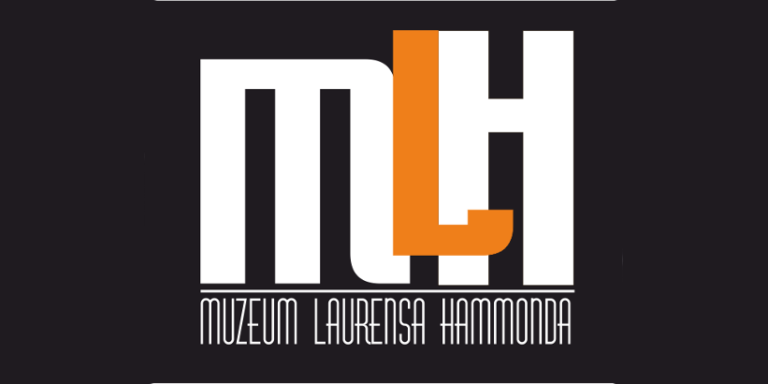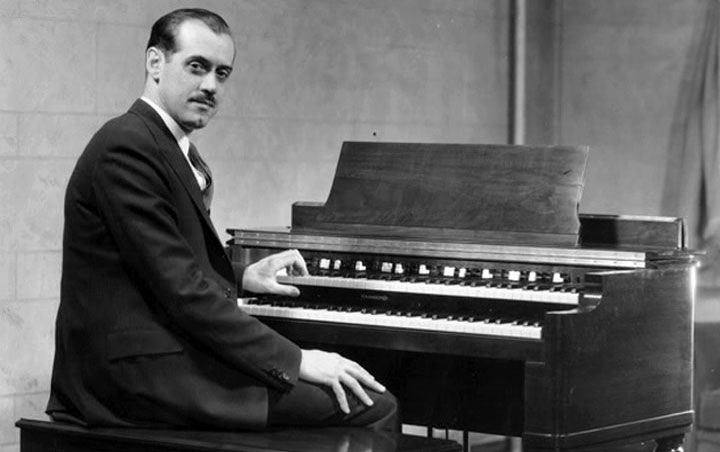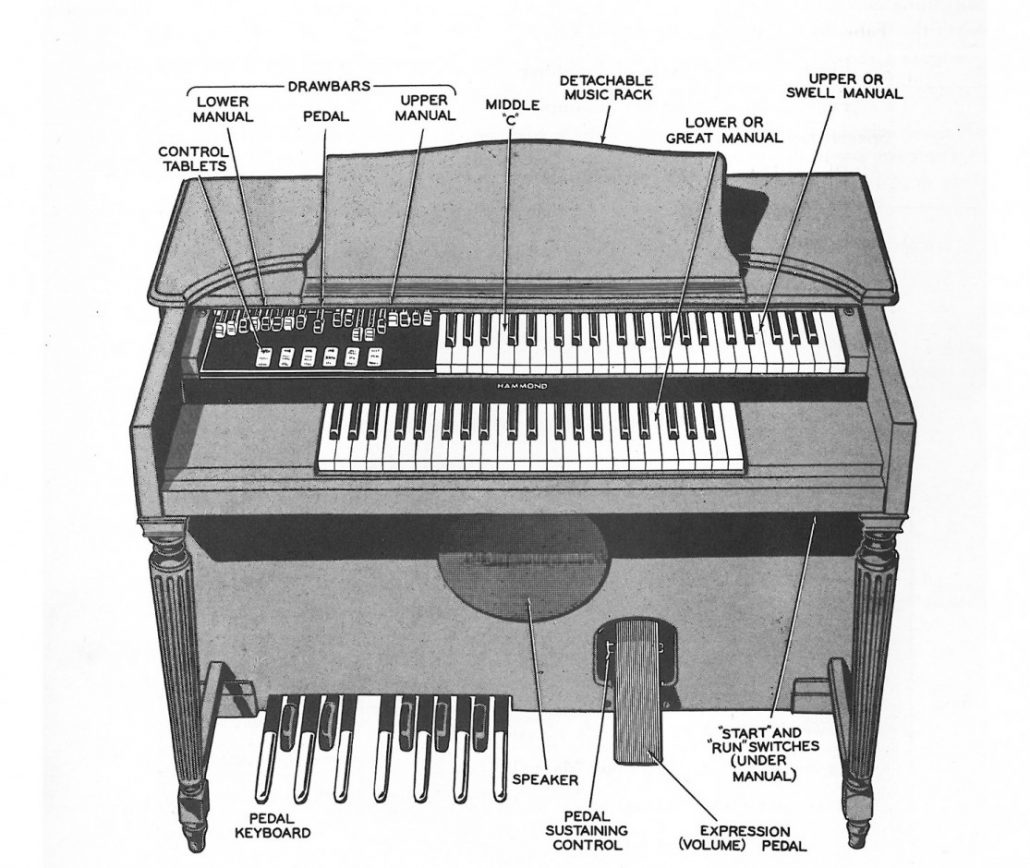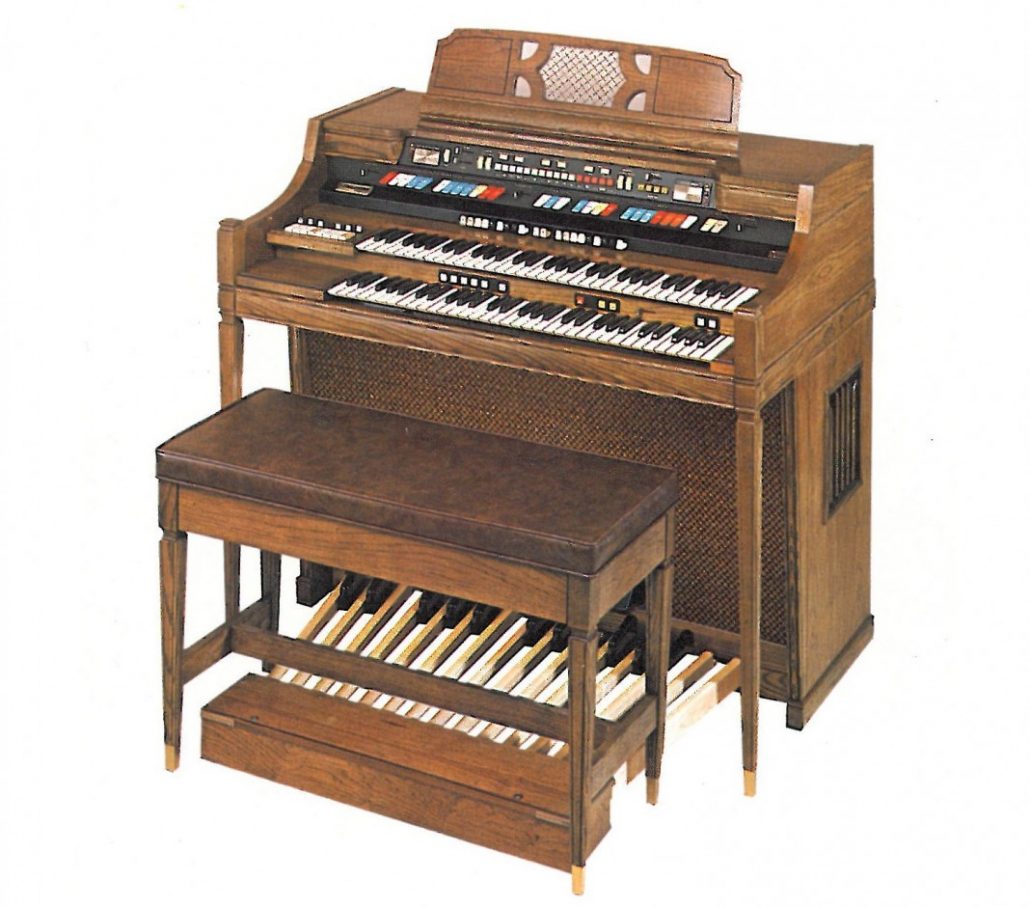L. H. Museum is a division of Museum of Toys and Play located at 13. Kościuszki Street in Kielce.
On over 250 sq. meters 60 organs, several clocks and a card table is presented.
Museum was opened on October 28th 2017.
Artists like Jimmy Smith, Keith Emerson, Thijs van Leer, Czesław Niemen, Krzysztof Sadowski or Wojciech Karolak are inseparably asocieted with Hammond organs.
Laurens Hammond (1895-1973)
Laurens Hammond was born on January 11, 1895 in Evanston, Illinois, in the United States as the son of the owner of First National Bank, William Hammond and painter Louise Strong.
At the age of 3 he lost his father. He was raised by his mother, who was very concerned about developing his son’s technical abilities. Laurens, from an early age, was fond of tinkering. As a 15-year-old, he designed an automatic transmission for which he received his first patent in 1910. Allegedly, he and his mother tried to cooperate with Renault, but the French manufacturer was not interested in the invention. Apart from designing things, Hammond loved music. He was fascinated by the sounds of the church organs which he remembered from childhood. He took piano lessons but was not a musician.
In 1916, Laurens graduated with honors from Cornell University, earning the title of mechanical engineer. He was fluent in French and German.
After graduation, the young engineer joined the army. During the First World War, he served in the 16th US Expeditionary Force Regiment in France. In the army, he became a Lieutenant. The Second World War put the inventor in collaboration with the US military and government: he built, among others, submarine gyroscopes and auto-driving bomb mechanisms.
Among his numerous inventions are automatic transmission, silently running clocks, clocks with synchronous motors, 3-D glasses for viewing movies in 3-D, a bridge table and a sound generator.
Laurens Hammond died at the age of 78 as a humble inventor with the right to over 90 of his own patents.
Hammond organs – electric musical instruments, patented in 1934 by American inventor Laurens Hammond. The instrument was manufactured for and is popular among musicians to this day.
The classic instrument design features two 61-key keyboards and 25 (or 32 in the concert version) pedals. The effect of the vibrating sound is usually achieved by the rotating Leslie speakers. The Hammond organ’s status as the iconic instrument was earned by the B3 model and is the only one currently being produced with an electronic generator.
Hammond organs found extensive use in the rock music of the sixties. The first musicians who began to use Hammond organs in their bands were Georgie Fame and Graham Bond. Later, they were mainly used by bands known as the British invasion (including The Nice and Procol Harum), next in psychedelic rock and progressive rock and in the 1970s for hard rock (Pink Floyd, Deep Purple).
The first Hammond organs appeared in Poland in the 1950s. Their virtuoso was Benon Hardy, regularly broadcasting on radio.
In Poland, Hammond’s organs were used primarily by Czesław Niemen and Andrzej Zieliński. In later times, the popularity of this instrument in rock music decreased.





